Are We Failing Our Teachers?
Updated: Aug. 15, 2023
With poor working conditions across the country, our teachers are struggling
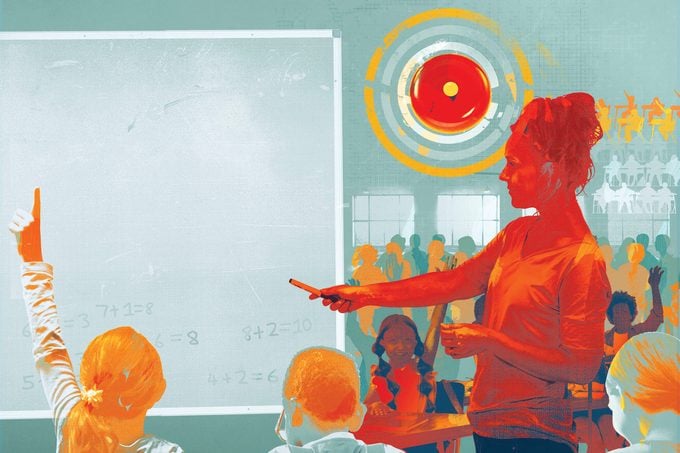
Rosemary Curts didn’t get into teaching for pay or prestige or because she wanted a drama-free life. Curts, an energetic 30-year-old high school teacher in Dallas with long blond hair, glasses and a dimpled smile, got into it because she loves math and she wants to “share that passion—and the beauty I see in math—with other people.”
People like Jasmine, whom Curts first encountered when she was a sweet sophomore, bravely mixing it up in a class of intimidating juniors. Jasmine approached Curts after graduation last year to tell her she got into Texas Tech and planned to major in computer science, then hovered awkwardly until she got up the courage to finally blurt out what she really wanted to say: “You made me like math again.”
In those moments, everything makes sense to Curts. Her life is full of purpose. She feels privileged. She remembers why she became a teacher.
But lately those moments have been getting harder to hold on to because of issues that have made teaching harder. A big one is staffing shortages. Last fall, on the first day of school, 45 students filed into Curts’s algebra class—15 more than usual. There were so many students that some had to sit on tables or hold their papers against the wall to write out their math problems.
“There weren’t enough desks in my room for all the kids. And even if there were enough desks, we wouldn’t have been able to fit them all in,” says Curts.
Teaching was always a tough job. It’s a lot of work, and in too many school districts, the pay stinks. Teachers also need to be proficient in far more than just the subject they’ve been hired to teach. They need to be comfortable talking to students and colleagues, and also adept at negotiating the bureaucracy.
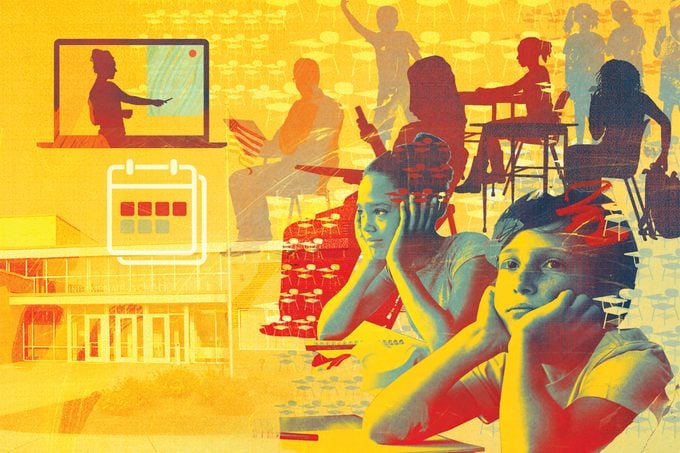
It’s only gotten tougher in recent years as teachers have had to grapple with new fears about school shootings and an increasingly polarized political environment that has placed educators on the front lines of the culture wars. And, of course, COVID-19 only compounded the problems. As a result, about 300,000 of the nation’s roughly 3.1 million teachers left the field between February 2020 and May 2022. About 55% of the remaining educators say they are considering leaving the profession earlier than they had planned, according to a survey by the National Education Association.
The teaching exodus has caused states to take drastic measures. Arizona is recruiting college students to teach, while Florida schools are hiring unlicensed veterans to fill the gaps. In Utah, about 15% of teachers have not completed a teacher preparation program, and many are operating under an emergency credential, which means they passed a background check and have demonstrated “minimal competencies and are willing to do the job,” says Malia Hite, executive coordinator of educator licensing at the Utah State Board of Education. “That means we have teachers in classrooms teaching kids who don’t have all the skills to do the job.” This is not a new situation, she adds, but it’s gotten worse.
At least there are humans leading those classes. In the rural Mississippi town of Rosedale, geometry students learn from a recording because the high school’s lone math teacher is forced to teach multiple classes at once.
At W.H. Adamson, the 1,500-student high school where Curts teaches, the administration began sending out a daily list of all staff vacancies and absences, along with a list of names spelling out who is responsible that day for covering them. Curts, who relies on teaching assistants to help her English as a Second Language (ESL) and special-needs students, says the names of her assistants are on the coverage list most days, forcing her to decide between letting her special-needs and ESL pupils fall behind, or slowing down the class for the remaining 30 students.

Lately, the situation has gotten so dire that the school has resorted to splitting up sick teachers’ classes and distributing them to colleagues.
“You don’t want to be absent because you don’t want to be a burden on everyone else,” says Curts, who had COVID-19 last year and rushed back to work as soon as she could. “If you normally have a class of 30 kids and then suddenly you’ve got 15 more kids from someone else, you have a giant crowded classroom, the kids are noisy and there’s confusion. So when the classes are split like that, not only is learning affected that day for the kids, but also now the teachers whose classes they’re sent into are affected.”
(Don’t miss these heartwarming stories of teachers who changed students’ lives.)
Where did all the teachers go?
Experts say the origins of the teacher staffing crisis are no mystery: Most teaching schools simply aren’t graduating as many new teachers as they used to. In Ohio, the number of students completing teacher education programs has fallen by half over the past decade. In Pennsylvania, the number of new teachers graduated by state schools has plummeted by two-thirds, from more than 20,000 new teachers a year in 2010 to fewer than 7,000 in 2021. Nationally, 20% to 30% fewer people are going into teaching each year than were a decade ago, according to the journal Education Next.
Many economists and educational experts say poor pay is a big part of the problem. In the District of Columbia, a teacher’s starting salary is $55,209. But, according to Zippia, a job search website, the livable wage there for a family of three is $68,000. In Montana, the starting salary is $31,418, well below the livable wage of $47,000 for a family of three. In 34 states, teachers’ starting salaries are below $40,000 a year.
Taking inflation into account, over the past 10 years teacher salaries have declined in most states. Real wages for teachers declined by 18.6% in Indiana between the 1999–2000 and 2018–2019 school years, says Edward Fuller, a professor in the Department of Education Policy Studies at Penn State. In Michigan the drop was 15.7%, and in Wisconsin it was 16.4%.
In some areas of Pennsylvania, Fuller’s home state, teachers’ pay is still $18,000 to $20,000 a year—the same salary he made when he taught back in 1990. In that state, 40% of teachers—those who are single with one child—would fall below the poverty level.
While salaries have declined, tuition and fees for higher education have increased by at least 20% over the past 10 years, in large part because states have cut subsidies. The National Education Association notes that 32 states spent less on public colleges and universities in 2020 than in 2008. The higher costs mean many teachers are saddled with larger debt and smaller salaries to pay them off.
“Money matters,” says Fuller, “particularly when you have other job opportunities.” According to a recent study from the Economic Policy Institute, in some states, teachers make almost 33% less than others with equivalent degrees. Frustration is so widespread that last July a teacher in Ohio went viral on TikTok after announcing he was quitting his job as an early-education teacher after six years to take a job as a Walmart store manager because he could make almost 50% more “not using my degree.”
A job to nowhere
Pay isn’t the only issue motivating teachers to look elsewhere. Career advancement—or lack thereof—is another factor. Matthew Kraft, an associate professor of education and economics at Brown University, says that for many teachers there’s nowhere to go but sideways.
“When you ask students about why they were interested in but ultimately didn’t choose to go into teaching, they tell you things like pay, of course, but they also tell you that there’s a real lack of career advancement opportunities,” he says. In other fields, professionals may see a clear ladder to climb, leading to a managerial position, for example. Teaching doesn’t really work that way.
Amy Morton, of the National Center on Education and the Economy (NCEE), notes that the only path to professional advancement in American teaching requires leaving teaching and going into administration.
“A teacher who’s teaching in their first year is basically doing the same thing in their 30th year, and they simply have to put in the years to earn higher pay,” she says.
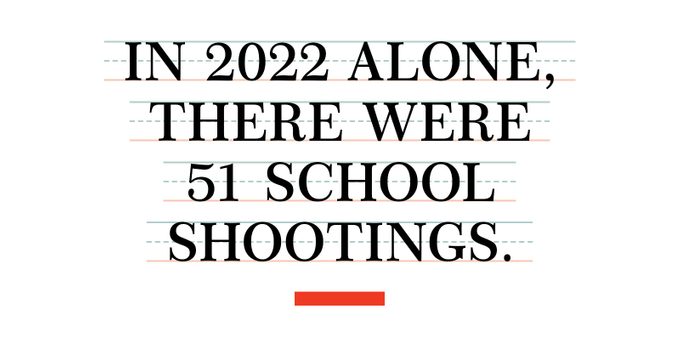
Workplace safety is another issue cited by teachers, ever since the 1999 Columbine shooting ushered in a new era of school violence. In 2022 alone, there were 51 school shootings. As a result, 4 in 10 educators say they feel less safe in their schools than they did five years ago, according to a survey by the EdWeek Research Center.
And it’s not just guns. Students and parents have gotten far more aggressive.
“Schools have become this place to have debates about what should be taught,” says Brian Schultz, an education professor at Miami University in Ohio. “As a result, people in the public sphere are questioning not only teacher content expertise, but also the ways that we engage young people in classrooms.” For example, is it too political?
Teachers, he says, be they novice or experienced, are “fed up, they’re disgusted, they’re annoyed and they really find it troubling for their professional acumen to be questioned.”
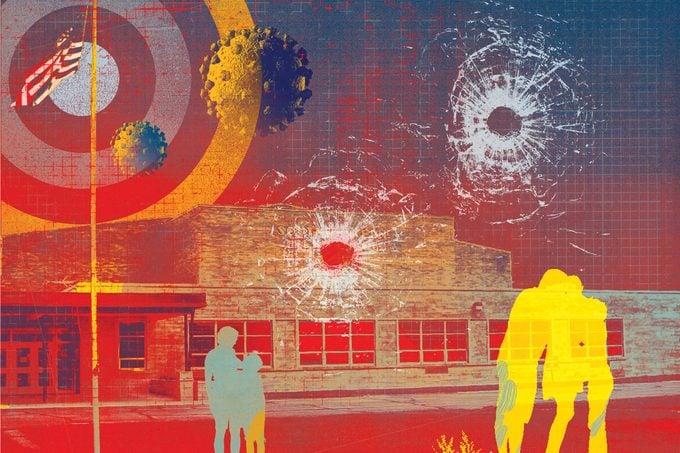
Add it all up, plus throw COVID-19 into the mix, along with budget cuts that increasingly have teachers reaching into their own pockets to buy supplies, and it’s been a recipe for crisis.
“It’s just been exhausting,” says Hite. “We keep asking teachers and educators to do one more thing, but we’re not taking anything off their plates and they’re really tired.”
Course correction
The most obvious solution to the great teacher exodus is better salaries, and the American public is on board, with one 2022 survey from Education Next showing that 72% of Americans support raises for teachers. In Wisconsin, for instance, a poll conducted by Spectrum News/Siena College found that 68% of likely voters support a state and local tax increase to help pay teachers. Still, federal action to incentivize states to raise teacher pay has been stalled by Republicans who tend to oppose federal involvement in what they consider a state matter.
Some states have acted, with Democratic and Republican governors enacting legislation increasing teacher pay. Last year, in New Mexico, a law raising base salaries by 20% on average had bipartisan support, while in Mississippi, teachers received raises averaging more than 10%.
Offering apprenticeships is another way to draw in prospective teachers. The federal government has launched pilot programs in West Virginia and Tennessee that expand existing student apprenticeship programs and pay student teachers while they teach in classrooms. Right now, most student teaching positions are unpaid. In Ohio, educators at the University of Miami have launched a program that recruits inner-city teachers locally when they are still in high school, and then provides mentoring, early college credit in high school, financial assistance to complete college and the guarantee of a job.

But nobody believes money alone will solve the problem. To find working solutions, we may find some inspiration abroad. Amy Morton and her colleagues at NCEE selected 10 top-performing nations and ranked them on the performance of students, the most equitable student outcomes (the smallest gap between the highest- and lowest-performing students) and the most efficient use of resources. Top marks went to Estonia, Finland, Hong Kong, Japan, Poland, Singapore, Korea, Taiwan and parts of Canada and China. The United States ranked last in all the “performance” categories: reading, math and science.
What those countries’ successful schools share in common—and what the United States needs to consider, Morton says—is a culture that distributes more leadership to teachers, promotes collaboration and gives teachers a clear path to promotion while getting them the mentoring they need. The top countries on her list “have significantly fewer administrators,” she says, “but more empowered teachers.”
Here in the United States, a growing emphasis on standardized testing has led many educators to complain that too much classroom time is taken up teaching to those tests. The problem, they say, is that these tests evaluate rote knowledge but do little to evaluate problem solving, critical thinking or creativity. Test scores thus have little connection to the quality of learning, the likelihood of future student success or actual life skills.
But because the tests are used to evaluate school performance, and thus determine funding and who gets certain bonuses, they have increasingly come to dominate the agenda. Conversely, letting teachers have a freer hand would likely engage them, as well as students numbed by the incessant test taking.
Experienced teachers shouldn’t be limited to teaching students. They also need to coach novice teachers. But in America today, there’s a sizable catch. Because teachers who have put in the years can often request assignments in more desirable and wealthier school districts, the newest teachers often land where they’re needed most: high-needs schools in inner cities and rural areas, where they might not have the mentoring to help them get off to a successful start.
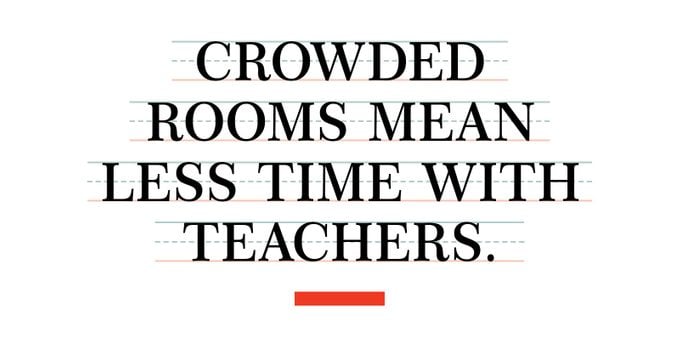
Incentivizing the old pros by giving them bonuses to stay in these schools would help ease the transition for newer teachers. In Finland and elsewhere, Morton says, new teachers work and interact regularly with “experienced teachers who can progress in their careers only if they demonstrate their ability to develop the capacity of their younger, less experienced peers.”
At the end of the day, it’s not only teachers who are suffering. Their students feel it too. Teachers are on the front lines of society, often the first to spot students in trouble—some keep food in their desks for hungry kids. Crowded schoolrooms mean less face time with teachers. And if a teacher is burned out, unhappy and operating from a place of crisis, it’s difficult for that educator to pass along a love of learning. It’s hard to cultivate an atmosphere of infectious joy, wonder and curiosity when you’re broke, anxious and frustrated.
For her part, Rosemary Curts plans to stick around. But she understands why many are leaving. “Public education is worth fighting for,” she says. But she also recognizes that she has it a little easier than other teachers. “For one thing I don’t have kids, so I have more time for myself in the evening if I have work to do or if I want to rest. I have a strong support system with my family and my union. I wish that everybody could have that.”
Problems aside, “the connections you make with students,” she says, “the times that you see the ‘aha!’ moments when students get it,” still make it all worth it for her. “I’m not ready to give that up.”


